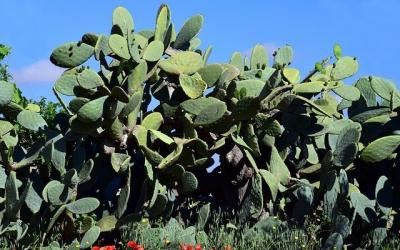LOS PARQUES TECNOLÓGICOS COMO UNA ESTRATEGIA PARA LA INNOVACIÓN EN EL SECTOR AGROINDUSTRIAL
TECHNOLOGY PARKS AS A STRATEGY FOR INNOVATION IN THE AGROINDUSTRIAL SECTOR
Fecha recibido: 29/04/2021 | Fecha publicado: 04/05/2021 | Fecha corregido: 04/05/2021 |Autores
Dr. Germán Narváez Vásquez, Dr. Atzimba González, MNI. Luis Asencio Cristóbal
RESUMEN
Se ha demostrado en estas últimas décadas que la I+D+I constituyen un factor determinante en la economía de los pueblos, por este motivo se han elaborado un sinnúmero de iniciativas encaminadas al desarrollo de Parques Científicos y Tecnológicos de ámbito sectorial (sector agroindustrial, TIC`s, etc.). En la trilogía Gobierno, Empresa, Universidad la situación es muy compleja ya que intervienen una serie de factores de muy diversa índole y en la que no es fácil estudiar alternativas debido a la falta de instrumentos y estudios que permitan que sean analizados de una forma objetiva. Además, que se trata de decisiones estratégicas a largo plazo, con grandes inversiones y en la que se requiere el apoyo decidido de todos los actores que intervienen directa e indirectamente. En este sentido se hace necesario abordar esta situación bajo un punto de vista científico y objetivo como paso previo a la definición estratégica. Es decir, la necesidad de realizar un análisis exhaustivo del estado del arte, con la finalidad de establecer una serie de criterios e indicadores que permitan evaluar la viabilidad de la creación de Parques Científicos-Tecnológicos en el Sector Agroindustrial. Para la consecución del objetivo planteado, se ha seguido la siguiente metodología: i) Recogida y análisis de la información, ii) Análisis de indicadores propuestos, iii) Interpretación de resultados, iv) Descripción del modelo. Cabe señalar que el modelo planteado se estructura en torno a tres niveles de información: 1) Análisis externo: análisis socio-económico del territorio, 2) Análisis estratégico: análisis del sector, 3) análisis del proyecto: análisis técnico/económico.
PALABRAS CLAVE: Innovación, Parque Tecnológico, Agroindustrial, Indicadores, Modelo.
TECHNOLOGY PARKS AS A STRATEGY FOR INNOVATION IN THE AGROINDUSTRIAL SECTOR
ABSTRACT
It has been shown in recent decades that R & D & I constitute a determining factor in the economy of the towns, for this reason, a number of initiatives have been drawn up aimed at the development of Science and Technology Parks at the sectoral level (Agroindustry Sector, ICT`s, etc.). In the Government, Company, University trilogy the situation is very complex since a series of very diverse factors intervene and in which it is not easy to study alternatives due to the lack of instruments and studies that allow them to be analyzed objectively. Furthermore, it is about long-term strategic decisions, with large investments and in which the decisive support of all the actors that intervene directly and indirectly is required. In this sense, it is necessary to approach this situation from a scientific and objective point of view as a previous step to the strategic definition. In other words, the need to carry out an exhaustive analysis of the state of the art, in order to establish a series of criteria and indicators that allow evaluating the viability of creating Scientific-Technological Parks in the Agroindustry Sector. To achieve the stated objective, the following methodology has been followed: i) Collection and analysis of information, ii) Analysis of proposed indicators, iii) Interpretation of results, iv) Description of the model. It should be noted that the proposed model is structured around three levels of information: 1) External analysis: socio-economic analysis of the territory, 2) Strategic analysis: analysis of the sector, 3) project analysis: technical / economic analysis.
KEY WORDS: Innovation, Technology Park, Agroindustrial, Model, Indicators.


